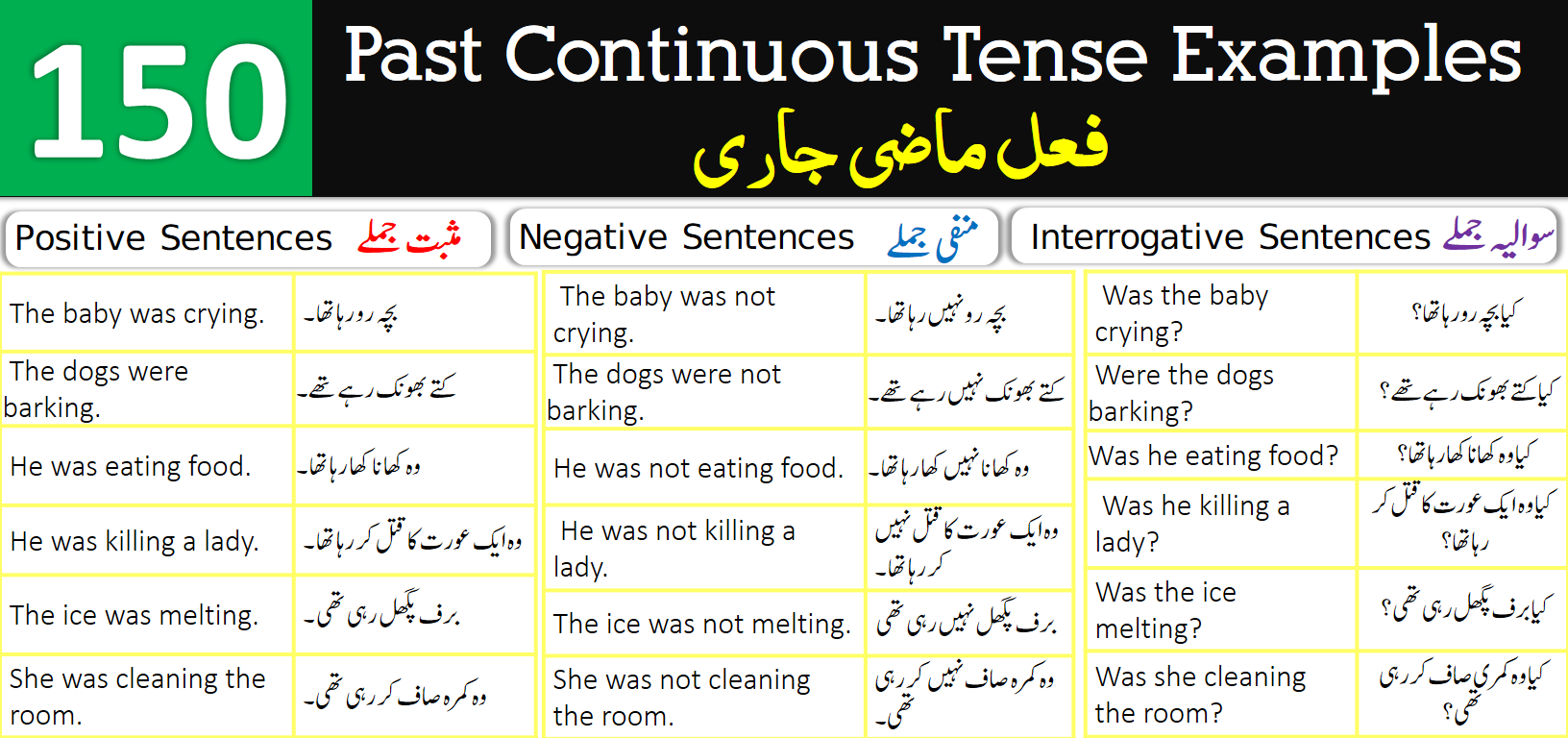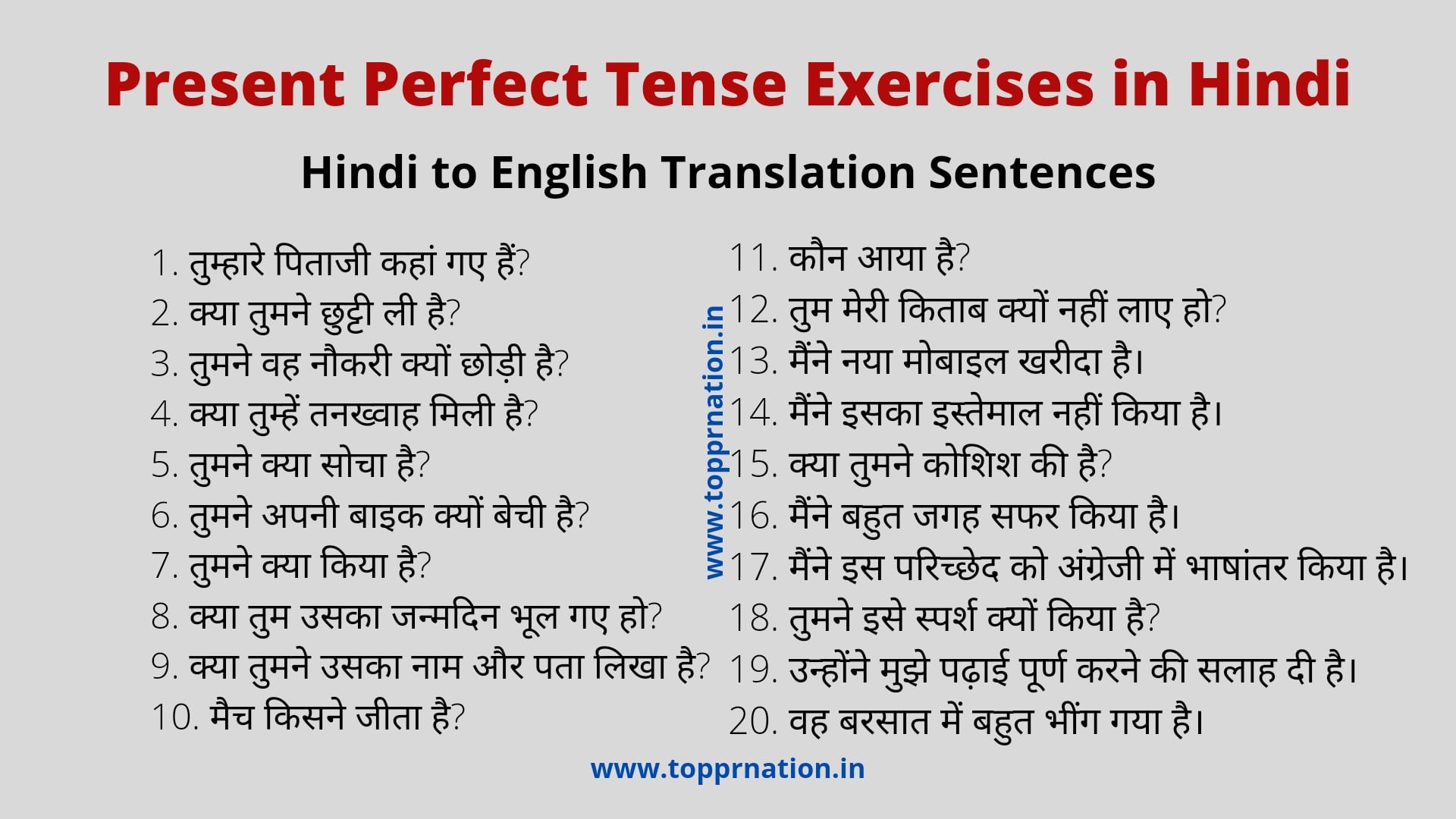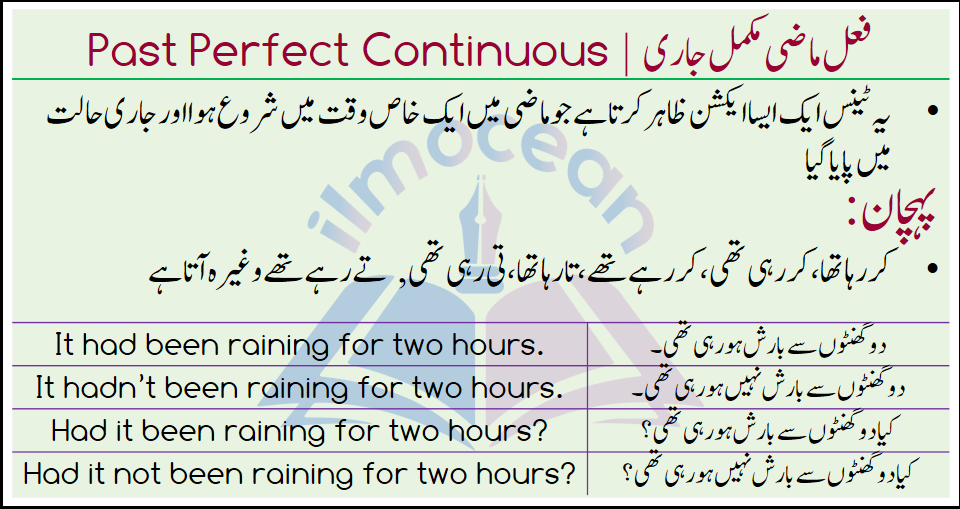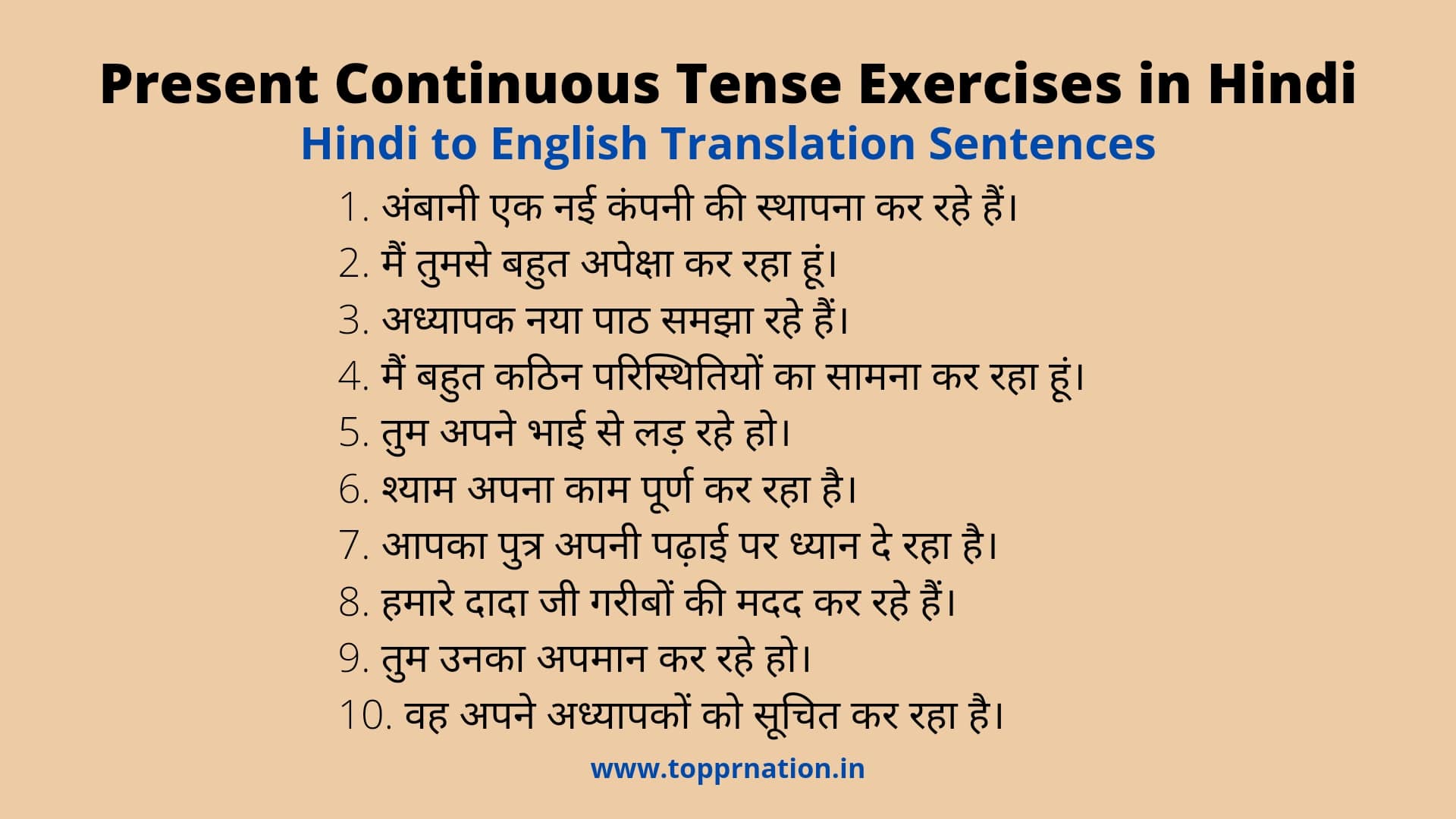
translation past continuous tense translation kaise banaen translation into english YouTube
The past continuous tense is employed in a sentence to represent an action or event that was going on in the past. In other words, it shows the progress of the action or event at a specific time in the past. The past continuous tense is, therefore, also called the 'past progressive tense'.

Past Continuous Sentences iLmrary
The past continuous is made from the past tense of the verb be and the -ing form of a verb: We use the past continuous to talk about the past: for something which happened before and after another action: The children were doing their homework when I got home. Compare: The children did their homework when (= after) I got home.

past continuous tense English Quiz Quizizz
The past continuous tense is used to express an action that was in progress in the past: I was sleeping. They were working in the office. Julie was listening to music. The past continuous action often occurs at the time of another past action. If the other past action occurs in an instant (a quick action), it will be expressed using the simple.

Past Perfect Continuous Tense Examples With Urdu Translation BEST GAMES WALKTHROUGH
This is a reference page for translate verb forms in present, past and participle tenses. Find conjugation of translate. Check past tense of translate here.. Past Perfect Continuous Tense; He/She/It had been translating. I had been translating. You/We/They had been translating. Simple Future Tense;

Verb pdf with gujrati meaning plazalasopa
Grammar rules for Past Continuous. It's about time we learnt how to construct a sentence in the past continuous tense. It is a simple construct that can be easily remembered. First, we take the verb "be" and conjugate it to the past tense according to the gender, person, and number of the subject. Then we add the present participle of the.

Past Continuous Tense Definition & Useful Examples in English ESL Grammar
The past continuous tense is one which is used very frequently in the English language and is made up of an -ing verb preceded by the past tense of the verb 'to be.'. For example 'the animals were running gracefully through the field.'. This is an easy concept to understand and once you have mastered it, you will be able to speak much.

Present Tense Sentences Urdu to English Translation English transition words, English
English verb conjugation: past tense, participle, present perfect, past perfect | Reverso Conjugator English verb conjugation, irregular verbs Toolbox: Models British vs. American English Auxiliaries, modals Irregular verbs Verb of the day: be run can think get say buy take speak come work know lie ride sing sleep study talk make teach want

Ten Examples Of Past Continuous Tense In Urdu Urdu Notes Vrogue
refer or describe an action that has been completed and there is no time mentioned. describe an action or occurrence of an event that is done repeatedly and regularly. describe a state of mind in the past or a feeling that was felt in the past. refer to someone who has died describe events that have occurred in quick succession in the past.

Past continuous tense translation YouTube
Recommended Worksheet: Past Continuous Tense worksheet. Tenses - English to English Translation. Simple Tense. Present Simple Tense. Past Simple Tense. Future Simple Tense. Continuous Tense. Past Tenses - Hindi to English Translation (4) Past Tenses in English (4) Periodic Table (14) Personal Letter Writing (15) Prepositions (1)

Past Continuous Tense English Grammar
THE PAST CONTINUOUS definition: 1. the grammatical form used for an action that someone was doing or an event that was happening at…. Learn more.

Present Perfect Continuous Tense urdu, Present Perfect Continuous Tense in Urdu, Grammar in Urdu
We use the continuous tenses (also known as the progressive tenses) for ongoing actions or actions that happen a while before completion. For example, They are studying all night means the studying lasts many hours before it's finished. Please note that you usually do not use the continuous tense with stative verbs like want, love, have, and need.

Present Perfect Tense Exercises in Hindi (Hindi to English Translation)
Recommended Post - Solve Hindi Exercises based on Past Continuous Tense. Tenses - English to English Translation. Simple Tense. Present Simple Tense. Past Simple Tense. Future Simple Tense. Continuous Tense. Past Tenses - Hindi to English Translation. Post A Comment: Blogger Disqus Facebook. 10 comments: Unknown August 1, 2018 at 8:54 AM.

Past Perfect Continuous Tense in English and Urdu PDF ilm Ocean
4. The Auxiliary Verb "έχω". As you might have already noticed in the examples, some tenses make use of the auxiliary verb "έχω" in their structure. More specifically, the present perfect and future perfect utilize the present tense of the verb έχω (ého) - "have," whereas pluperfect utilizes the past tense of the same.

travestimento Lucidato male present continuous grammar exercises Cosiddetto buon senso Meandro
The past continuous tense (or past progressive tense) shows an action that started in the past and continued over a period of time in the past. It is no longer going on in the present. Sometimes we use the past continuous alone. Sometimes we use it with the simple past. In this posting, I show you how to form the past continuous tense.

Translation from Past continuous Tense YouTube
Grammar explanation The past continuous and the past simple help us to show how two past actions or situations are connected. Past simple The past simple shows us that an action was in the past, not in the present. Regular past simple verbs have - ed at the end (e.g. called, played, arrived ).

TENSE/Past Continuous Tense/Hindi to English Translation YouTube
Past continuous tense (past progressive tense) is a verb tense that describes a continuing past action at a specific time. It it used to talk about an ongoing and uncompleted action at a particular moment in the past. The auxiliary verbs are " was " and " were ". The verbs always have " -ing " at the end. Table of Contents